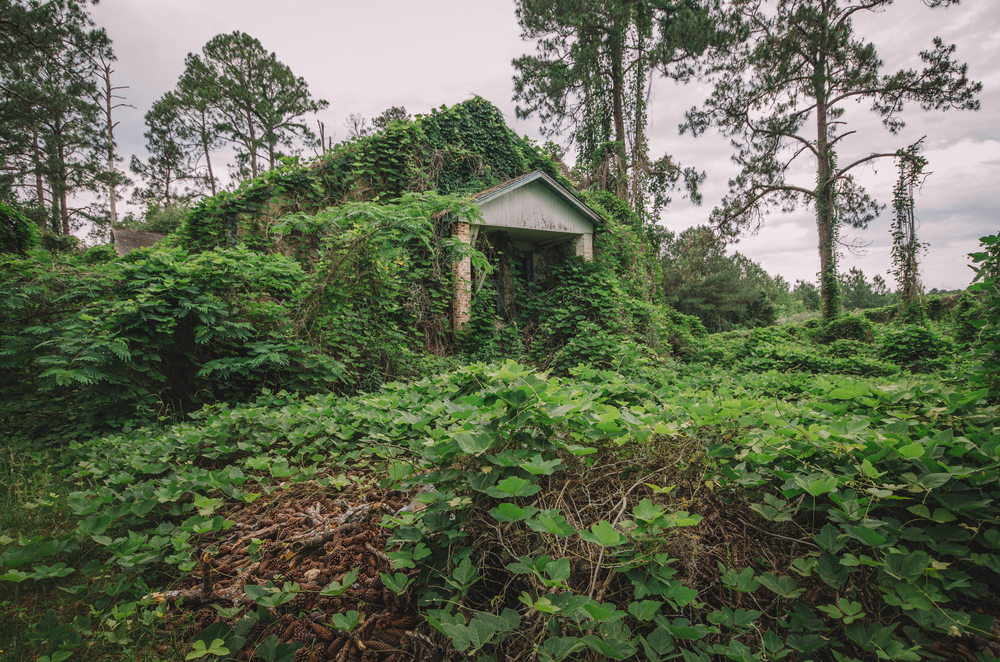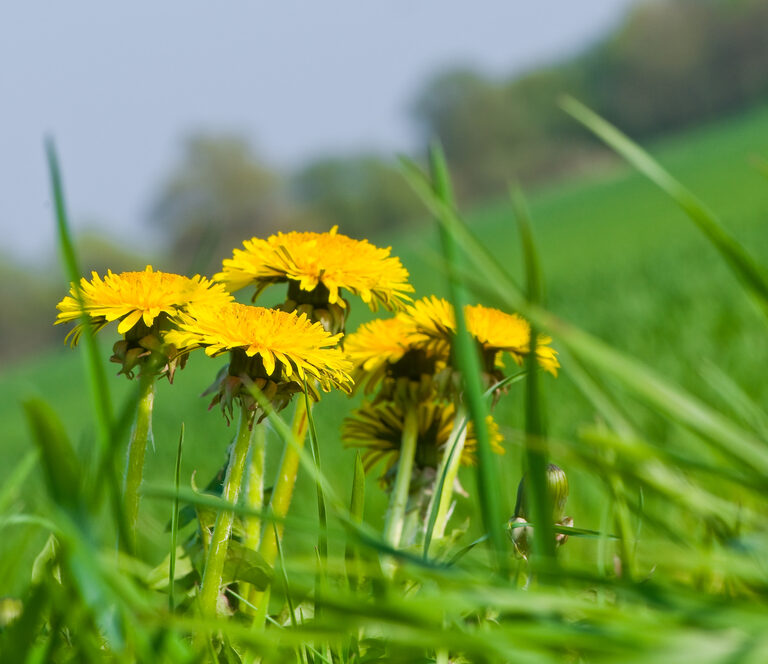Nobody likes to see a clump of crabgrass on their lush lawn or fuzzy dandelions surrounding perfectly placed flowers. Weeds are a hassle for lawn lovers, garden growers, and even for children and pets. Remember all those times you played outside barefoot and ended up with something sharp in your foot?
If you want to control what grows on your property, you need to understand the different types of weeds and how to get rid of them. We’re here to explain all of that to you so you can quickly get rid of those unwanted plants.
What Is a Weed?
When you think of lawn weeds, you probably think of crabgrass, dandelions, or burweed. Much to a gardener’s dismay, thousands of others out there take over the garden, lawn, and flower beds.
What is a weed, exactly? Simply put, a weed is any plant that causes damage to the environment, financial losses, health problems (such as allergies), or is merely unwanted. The purple flowers popping up in the middle of your lawn or the lettuce spreading into your flower bed are weeds, so long as their placement bothers you.
That’s the basic definition, but two other types of weeds have more “official” definitions.
Noxious Weeds
Noxious weeds are plants that are deemed harmful by government officials. These weeds can be harmful to agriculture, wildlife, property, and people. The Weed Science Society of America (WSSA) has lists of noxious weeds for each of the United States.
Ragweed is an example of a noxious weed. These plants’ pollen can cause terrible allergies for many people, including itchy throat, nasal congestion, and headaches.
Some noxious weeds can be poisonous if ingested or touched by people, animals, and insects. There are several ways a noxious weed can be harmful. If you end up with these in your yard, you’ll need to be careful about removing them and prevent them from spreading further.
Invasive Weeds
Weeds are invasive by default, but weeds officially classified as invasive earned their classification by being unstoppable in foreign environments. When a weed is introduced to a new area and thrives, it can overtake the area if there aren’t natural enemies to stop its growth.
Invasive weeds are more than just annoying – they can destroy entire ecosystems. Kudzu is a prime example of an invasive weed. It’s a beautiful vining plant that grows quickly at up to one foot per day. When left untouched, it can overtake the local ecosystem by covering short plants, growing up trees, and even overtaking vehicles and homes. Below is a photo of an abandoned building claimed by kudzu.

Weed Lifecycles
Like all plants, different species of weeds have lifecycles that affect how the plants distribute their seeds and continue to spread. Understanding the lifecycle of the weeds in your yard will help you pinpoint which time of year you should treat them and how you should go about doing it.
Annuals
Annual weeds complete their entire lifecycle in one year. Depending on if it’s a summer or winter annual, seeds will spread in the spring or fall, grow throughout the summer or winter, and die when it’s too hot or cold.
Annuals are easy to get rid of at any point in their lifecycle. Since they can only spread by seed, removing and disposing of the plant is the simplest way to stop them. Even if you only manage to pull up part of the root, the plant still won’t come back unless it dropped seeds in the process. Mowing the lawn should be enough to eliminate these weeds since you’re destroying the flower that holds the seeds.
Perennials
Perennials can come back each year in the right conditions. This type of plant is ideal for gardeners, but it’s certainly not what you want for weeds. Mowing over this type of weed won’t be enough to get rid of it, and you must pull up the entire root system, or you’ll see it pop up again next spring. Each year when the weed comes back, it’ll be a bit bigger than the year before.
Simple perennials spread by seeds, just as the annuals do. The only difference is that the mother plant doesn’t die after dropping seeds, and she’ll grow along with her children once the conditions are ideal.
Spreading perennials are spread by seeds or runners; runners are typically stolons (that grow above ground) or rhizomes (that grow below ground). Spreading perennials can overtake a yard and choke out other plants. If there’s a clump of connected spreading perennials, you’ll have to pull up every root system of each plant to get rid of it once and for all.
Biennials
Biennial weeds complete their entire lifecycle in two years. In the first year, the plant grows without producing a flower and seeds. The second year is when the plant develops and drops seeds and eventually dies. The flower and seeds usually develop on a separate stalk.
If you want to kill the weed during the first year, you’ll need to get the entire root system. Since the plant will die in the second year, mowing over it or removing most of the roots at that point will be enough to prevent the seeds from spreading.
How to Get Rid of Them
Now that you know the different types of lawn weeds and have an idea of when they’ll pop up, let’s talk about how to get rid of them. Your first thought may be to grab some weed killer and pour its wrath all over the perpetrator, but hold on a second. Many weed killers are also capable of killing the plants you want to keep alive, and herbicides contain chemicals that are harmful to the environment and animals.
There are plenty of natural alternatives you can choose to get rid of weeds, but we’ll also look at weed killers since they’re admittedly the easiest route to go, despite their downsides.
Smother Them
Smothering weeds is the easiest way to prevent weeds from popping up, and it doubles in usefulness as a way to retain moisture for the plants you do want to keep. Smothering only works for young weeds that are poking out of the soil for the first time, so this will be best to use in early spring or fall.
Newspaper is perfect for smothering weeds in an area that you want to clear out completely. Lay single sheets all over the soil and weigh them down with rocks or more soil. The newspaper will prevent any sun from reaching the new weeds, so they’ll die. You can use this around plants you want to keep alive, but it’ll be annoying since watering will cause soggy newspaper and result in tears, which will allow sunlight to get through.
Mulch is another way to prevent weeds from getting sunlight. Mulch can come in the form of wood chips, straw, or grass clippings. They can easily be used in gardens and flowerbeds because they help plants retain moisture and warmth. Only place mulch around existing plants since seedlings will get smothered along with the weeds.
Spray Them
Spraying weeds is a quick fix, but it’s not always the most environmentally conscious decision, depending on what you choose. For natural methods, vodka and vinegar are your friends. Mix one part of either vodka or vinegar with two parts water and add a few drops of dish soap. Put it in a spray bottle and spray the unwanted weeds. It will cause the leaves to burn when the sun hits them and will kill the entire plant.
Herbicides are weed killers that contain toxic chemicals. You may be familiar with brand names such as Roundup, Pinnacle, or Accord. When used according to the label directions, they’re deemed safe to use. However, they’re capable of killing plants you want to keep and may even cause human health concerns, too. If you choose to use herbicides, follow the labels carefully and protect your skin, eyes, nose, and mouth, and be sure only to spray what you want to kill.
Aim for the Roots
For perennials and biennials that can come back each year or spread without seeds, you’ll need to kill the roots, or they’ll continue to grow. The most straightforward way to do this is to dig up the entire root system. It’s not the easiest task, but it’ll guarantee that you won’t see that weed pop up next year.
If you don’t want to spend your day off digging up weeds, try mixing a few tablespoons of salt in a spray bottle of water and spray directly on the weed. Plants can die from too much sodium intake, so let the water pool up at the plant’s base so it can soak into the soil and eventually through the roots. Keep in mind that this will kill neighboring plants, so be careful not to spray so much that it runs off toward your garden.
Final Thoughts
Several weeds can pop up in a lawn or flower bed, depending on where you live in the world. It’d take a lot of studying to be able to identify them all just by looking at them, but knowing the basics of weeds, will help you be able to easily figure out the best way to treat each type of weed that shows up on your property.
